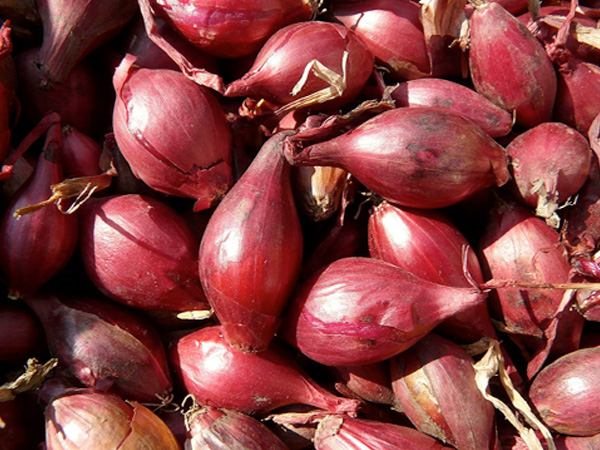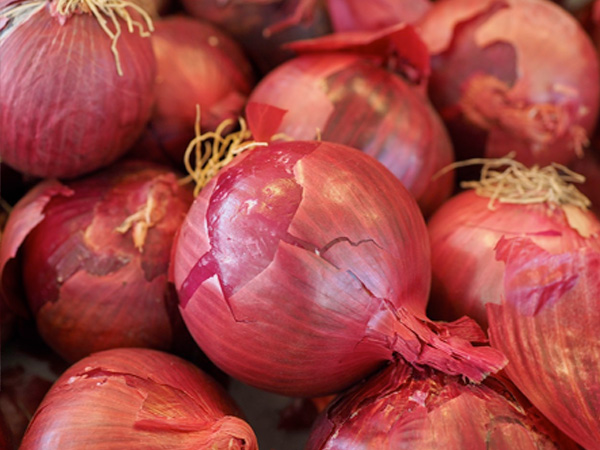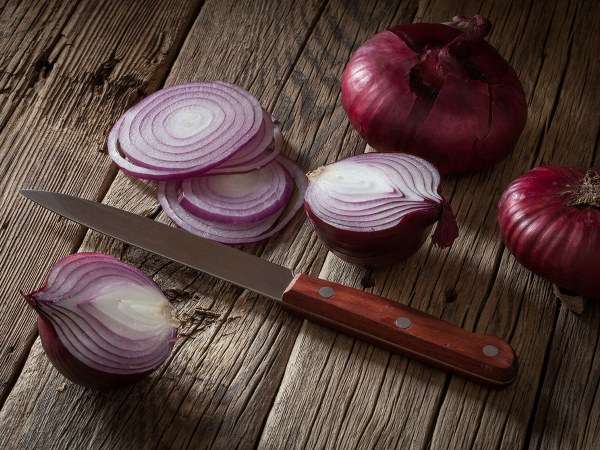
What Are Spring Onions?
- Spring onions are scientifically known as Allium fistulosum, where fistulosum means “hollow”.
- They are named so as they have white round bulbs and long green hollow stems, which are also thicker to support the bulbs.
- Both the bulb and stems of spring onions are used for cooking.
- As the name suggests, spring onions are mostly harvested during the spring season.
- The bulbs are milder, sweeter and mellower compared to other varieties while the greens or leaves are intense in flavour.
- Spring onions are basically immature onions as they are harvested mid-way through their growth. However, they are mature than two similar-appearing onion varieties called scallions and green onions.
- They are often sold in bunches.
- Compared to shallots and red onions, spring onions contain less tear-inducing enzymes. However, in some, it can still induce tears.
- Spring onions are good for stir-fried dishes such as fried rice and noodles. One can also use them raw and chopped in salads and dips.
Note: In some countries, spring onions are often confused with scallions, another variety of onions. While spring onions have a bulging bulb at the end, scallions have bulbs of the same width as the stems. The latter is also milder in taste compared to the prior.
 14 Kitchen Spices To Prevent And Manage Diabetes
14 Kitchen Spices To Prevent And Manage Diabetes

What Are Shallots?
- Shallots are scientifically known as Allium stipitatum.
- They have small bulbs that have a similar appearance to garlic.
- They are more elongated and grow in tight clusters.
- Shallots don’t have long green stems, unlike spring onions but look similar to red onions.
- The outer skin is brown and purple and rarely grey.
- The harvesting time of shallots is summer and fall.
- Shallots have a bit of sulfuric smell which is why it can be used as a replacement for garlic.
- They taste sweet and somewhat similar to yellow and white onions and quite different from spring onions.
- They are often sauteed lightly in oil or butter to bring out their unique taste and flavour.
- Shallots are good for sauces, dips and dressings.
 Pongal, Til Laddu And More: Health Benefits Of Foods Prepared During Sankranti
Pongal, Til Laddu And More: Health Benefits Of Foods Prepared During Sankranti

What Are Red Onions?
- Red onions are scientifically known as Allium cepa.
- They are the regular onions found in every household.
- The outer skin is thin and papery and is available in deep red, red or purplish-red colours. The inside portion is mostly white with a tinge of red.
- The red skin of this onion type is responsible for its high demand as they cause visual impact to customers.
- Red onions have a sharper and more pungent taste and flavour compared to the aforementioned varieties.
- When eaten raw, they taste a bit bitter and astringent.
- They are mainly used in dishes in which strong flavours are desired such as meat or fish gravies, burgers or sandwiches. Red onions are also widely used for pickling.
 Amazing Health Benefits Of Pine Nuts (Chilgoza Pine Nuts)
Amazing Health Benefits Of Pine Nuts (Chilgoza Pine Nuts)

Spring Onions Vs Shallots Vs red Onions: Which Is Healthier?
Different varieties of onions have different phenolic content, sugar composition, moisture, flavour and amount of antioxidants. A study says that the colour of different fruits or vegetables is dependent on a plant pigment called anthocyanins.
Red onions have more anthocyanins compared to spring onions and shallots. Also, chopping, oven roasting, refrigeration and frying do not significantly decrease the antioxidants and anthocyanins content in this onion type. [1]
On the other hand, another study has shown that the bulbs of spring onions are packed with many bioactive compounds that possess anti-inflammatory, analgesic, antioxidants, anti-diabetic and immunoprotective properties. [2]
READ RELATED: The 12.39am email that prompted Scott Morrison to close Australia's borders to beat the pandemic
Shallots have anti-Helicobacter pylori potential effect or say, the ability to ward off a bacteria type known as Helicobacter pylori which are responsible for stomach infection, gastritis and stomach cancer. Besides, shallots are packed with saponins, flavonols and sulfur species that may help prevent the growth of cancerous cells. [3]
What Are The Similarities?
All the three; spring onions, shallots and red onions belong to genus Allium and family Amaryllidaceae. A study says that the vegetables of this family may help prevent the risk of multiple cancers such as oesophagal cancer, prostate cancer and gastric cancer. They also exhibit cardioprotective, blood pressuring-lowering and anti-diabetic effects. [4]
 Breast Yeast Infection: Causes, Symptoms, Risk Factors, Treatments And Prevention
Breast Yeast Infection: Causes, Symptoms, Risk Factors, Treatments And Prevention
To Conclude
Spring onions, shallots, red onions are all nutritious and may help protect against a wide range of diseases. They all contain phenolic compounds, however, some have more and some less depending on the type and place where they are grown. Also, the difference in their taste, flavour and cooking methods allow them to be used as per the choice of dishes.
Source:









